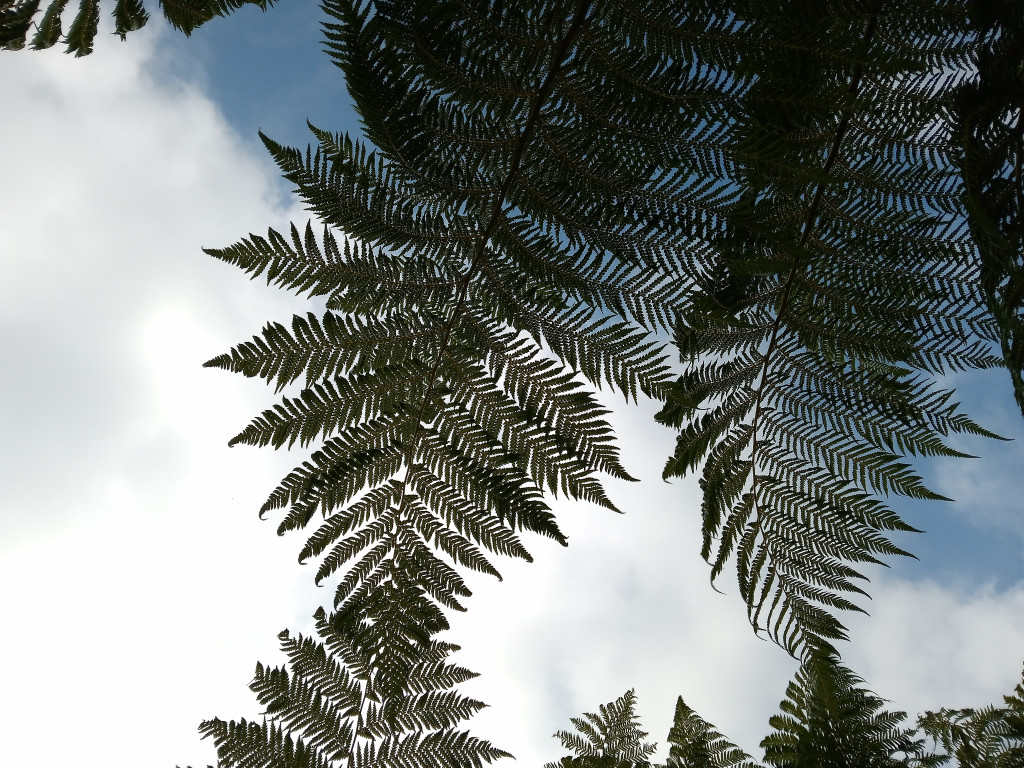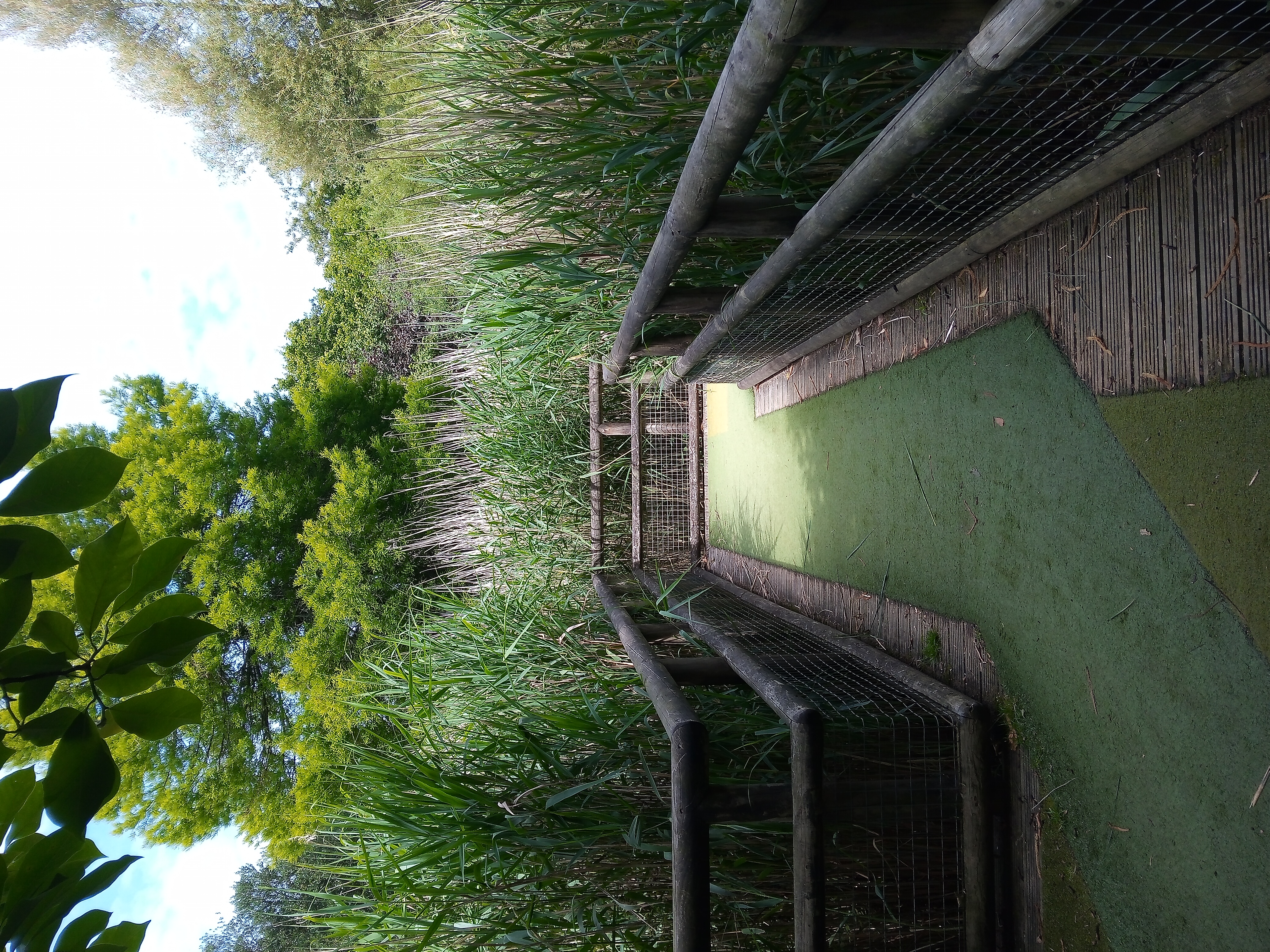News and Views
-
Blog: The Slow Trail
-
The slow Trail: An exercise in connecting people to nature
By Andrew Heaver (graduate ESR Online Course 2020 and Research Intern 2021)
Here at Durrell’s learning department, we’re about to try something different: instead of hyping Jersey Zoo’s visitors up, and flinging “fun facts” at them, we’re going to encourage them to...
S-L-O-W… D-O-W-N.
The Slow Trail (a new concept, developed by me during my internship here at Durrell, and which we plan to launch in early 2022) will invite our guests to take their time, and really notice the nature around them – which includes not just the zoo’s remarkable animals, but it’s beautiful plantlife and landscapes, too.
But why? How does this help Durrell’s core mission of saving species from extinction?

Slowing down, to accelerate action
We face an extinction emergency. Analyses produced for the U.N. in 2019, estimate that approximately 1 million species now face extinction.
We need massive, effective action. Now.
But for that to happen, we need the wholehearted support and involvement of the masses. We need as many people as possible to take personal responsibility for the things they can directly affect, and to create pressure that governments and businesses cannot ignore.
This actually creates quite a responsibility for zoos. Our mass-market audience allows us to speak to sections of the public that other conservation organisations can less easily reach. But unless zoos use their voices effectively, that opportunity is lost.
Traditionally, zoo education departments have adopted fact-based approaches, encouraging keepers to squeeze as much knowledge into their keeper talks as possible, and equipping each enclosure with neat labels announcing the residents’ scientific names and countries of origin. Generally, these labels would also include some factual but largely inconsequential trivia – such as announcing that giraffes have exactly the same number of bones in their necks as we do. Quite what we expect visitors to do this trivia is anyone’s guess (remember it in a pub quiz, perhaps?), but the trivia is churned out anyway.
This probably achieves little for conservation: even where the supplied facts help deliver a conservation message (e.g. alerting visitors to declines in the wild populations of those aforementioned giraffes), there is little credible evidence to suggest that “fact-shoveling” actually succeeds in winning widespread support for the fight against extinction.
Researchers who have investigated what works – and what does not – in conservation messaging are increasingly finding that the solution lies in nurturing “Nature Connectedness” and using emotional and sensory methods (rather than purely factual approaches) to do so.
Nature connection is an individual’s subjective sense of their relationship with nature – although it can be quantified through metrics such as the Nature Connection Index (or NCI). Excitingly, these metrics (or rather, the feelings they measure) appear to be powerful predictors of people’s environmental responsibility. For example, a 2020 study by Leanne Martin and others confirmed that an individual’s participation in pro-environmental behaviours (such as recycling, and choosing ‘eco-friendly’ products) relates closely to their NCI scores. This result is consistent with many other studies, as demonstrated by meta-analyses produced by Julie Whitburn and colleagues in the same year.
Nature connection, in turn, can be developed – but only if the right conditions are created. An important 2017 study by Ryan Lumber, Miles Richardson and Dave Sheffield found that people’s nature connection metrics can be improved by participation in activities based around one (or more) of five “nature connection pathways” (see below). Crucially, they also found that nature connection was not improved by either ‘superficial’ contact with nature (e.g. walking briskly through an environment, without really noticing it) or by knowledge-based activities.
This all suggests that if zoo-based conservation organisations want their visitors to hurry up and start acting for nature, they need to encourage them to slow down and re-connect with nature.

Meandering the nature connection pathways
The five approaches which – according to Lumber et al.’s research – succeed in helping people to grow their connection to nature are:
· Sensory contact (e.g. enjoying fragrant plants, or listening in to birdsong)
· Beauty (e.g. taking time to appreciate attractive landscapes)
· Meaning (e.g. reflecting on what nature means to you; asking what your favourite tree is – and why)
· Compassion (e.g. considering how you can personally help nature)
· Emotion (e.g. noticing that you feel calm while sitting by a lake, or feel happy when watching meerkats)
Accordingly, a major part of my Durrell internship is to investigate how those pathways can be embedded into visitor experience at Jersey Zoo. The zoo’s wonderful residents have the potential to be amazing “animal ambassadors”, and its serene, leafy landscapes could offer an ideal environment in which visitors can explore their feelings about nature. But, we do need to make sure that potential is unleashed.
Doing so will require experimenting with new ideas; The Slow Trail will be one of those experiments. Inspired by the thought-provoking efforts of the philosopher Alain de Botton to rethink the way that art museums engage their guests (efforts I became familiar with during prior work at Melbourne’s NGV galleries), The Slow Trail will supplement more traditional signage, offering what we hope will be a perspective-shifting alternative.
The trail will consist of a wide selection of activity ‘stations’, scattered throughout the zoo – each offering a self-led experience, rather than information. Every experience will draw on one (or more) of the nature connection pathways, and several will offer guests a chance to reflect on their experience, or to look at nature from a fresh perspective. Crucially, while many stations will focus on our animals (because they really are brilliant at encouraging emotional responses), at least half will focus instead on the zoo’s plantlife and peaceful landscapes – gently reminding us that natural beauty and wonder can be found right here, on our doorsteps, rather than just in far-away wildernesses (or in enclosures).
Slow Trail activities will include:
· Taking time to watch a bird – inviting guests to choose a single bird to carefully watch for a minute or two, so they can fully notice its beauty, behaviours, and movements.
· Choosing a favourite tree – drawing attention to the zoo’s spectacular trees, and inviting guests to consider whether there are trees in their own neighbourhoods that they particularly admire.
· Finding a favourite fragrance – inviting guests to enjoy the aromatic plants in our herb gardens.
· Reflecting on ripples – inviting guests to contemplate the beauty of the ripples beneath one of our valley bridges, and encouraging reflection on the vital importance of clean water to our everyday lives.
The full list of trail stations is long, and (we intend) will change over the seasons – encouraging guests to enjoy our bee-filled lavender blooms in summer, or to rustle amongst the fallen leaves in autumn. Because of this (and because we want people to give themselves time to relax, rather than feeling rushed), we’ll be discouraging guests from feeling the need to try everything in a single visit.
Are we on the right track...?
While it may be unrealistic to expect that the Slow Trail, alone, will be enough to create enormous attitude shifts amongst zoo audiences, this determination to try new approaches – and simply to recognise that new approaches are needed – is an important step in the right direction.
Once the trail is installed, we plan to evaluate it robustly, to assess whether or not it succeeds in nudging visitors towards more meaningful encounters with nature, and to identify whether some aspects work better than others. This will provide crucial knowledge to help guide further, wider work – hopefully setting Durrell on track to become more effective at inspiring others.
For me, this willingness to experiment, and commitment to work adaptively in response to that experimentation (as per the “Open Standards” approach to conservation work), is one of Durrell’s greatest strengths – which is why it is so exciting to be participating in the internship programme here. There is so much to do if we want to inspire people to create a wilder world – but if we’re embrace the learning curve, there is so much we can achieve.
Durrell wish to thank The Co-op Community Fund (Channel Islands) for their generous support of The Slow Trail project.
Facebook: Channel Islands Co-operative @cicoop https://www.facebook.com/cicoop/
Twitter: Channel Islands Co-operative @CI_Coop https://twitter.com/ci_coop?lang=en
References
Lumber R, Richardson M, Sheffield D(2017) Beyond knowing nature: Contact, emotion, compassion, meaning, and beauty are pathways to nature connection. PLoS ONE 12(5):e0177186. https://doi.org/10.1371/journal.pone.0177186
-